I am very new into electronic.
Can you please explain why looping OR gate output back to input does not work when using BJT transistors for OR gate? but it works with OR gate ICs
Here is the schematic: http://everycircuit.com/circuit/6264984905187328
I am trying to achieve this setup, but wondering why it is not working when OR gate is made out of BJT transistors.
